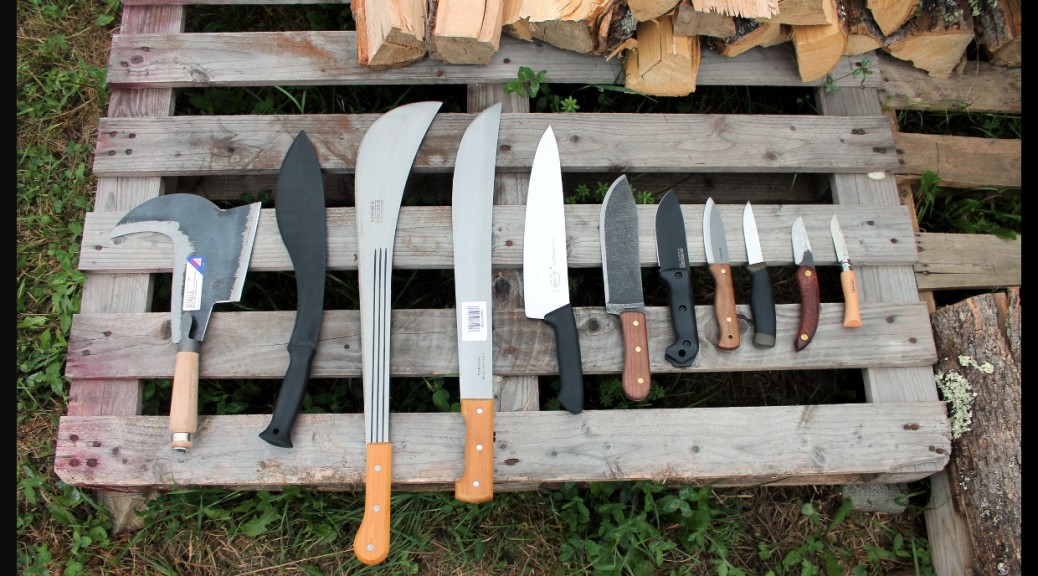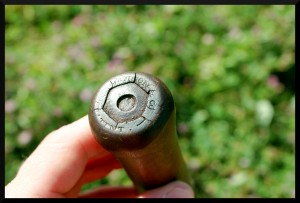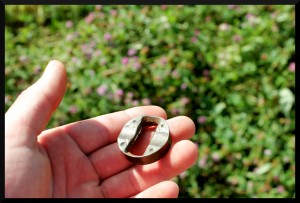Note: This work is a living document and will continue to see updates as we have the opportunity to write them.
In cutting tools today the most common topics stem around steels, heat treatment, and (in folding knives) locking mechanisms. If you’re lucky, you might see some discussion around cross-sectional geometry and its impact on cutting performance. However, one aspect of edged tool design that seems to almost never be discussed is the impact of the profile of the tool on its optimum stroke pattern, or even how strokes themselves behave. This is a fundamental and profoundly important aspect of edged tool design, and culturing a deep understanding of it can greatly assist in matching the correct tools to their best functional contexts.
Any stroke of a rigid object consists of two variables: the path and the presentation. In the following diagrams, the path is shown as a red line, and for clarity’s sake the heel of the blade is bound to it, riding along it as if affixed to a track.
Presentation is the orientation of the blade relative to the path. A green line is used to represent the path traced by the toe of the blade and the depth of the swath made by the total stroke, though the red line is considered the dominant path of the two. In this case there is no path (just a single point at the heel) and the presentation of the blade is being altered by pivoting it at that point.
Here the two actions are combined. The heel rides the path while the presentation shifts through rotation relative to the path.
You can see how an object presented as a target to the blade would only be cut by this motion if it existed in the space between the first and second frames of the animation, after which the spine begins to precede the edge, and the edge is pulled away from the target instead of moving into it. This brings us to the subject of edge engagement and stroke optimization.
To begin, let’s demonstrate using this straight-edged knife cutting a target against a flat anvil surface. As before, the red line represents the path of the stroke, while the green line described by the toe helps visualize how the presentation of the blade is affecting the depth of the swath (the area the edge actively passes through during the stroke.) The act of cutting consists of a combination of pushing and sliding forces, in varied degrees. Here we see an isolation of sliding force, without any pushing.

As you can see, no green line is visible because the edge is running perfectly on top of the path itself, and as a result, there is no depth to the swath. In order for the knife to cut the target, the path and presentation need to be altered to add depth to the swath and place the target within its boundaries. However, the edge can be considered as fully engaged because its full length is sliding along the surface of the target, albeit with no penetration at all. This unusual situation will become important later as we delve into more complicated aspects of cutting strokes, and will be referred to as a “neutral slice” from this point onward.
Shifting from a neutral slice, let’s switch to the opposite extreme by rotating the path 90°. This happens to switch this blade to what is, from here on out, referred to as a “fully open” presentation, in that the depth of the swath cannot be increased any further. Rotating the blade in either direction would result in the depth of the swath narrowing, but would cause either the toe of the blade or the heel of the blade to be leading the stroke depending on the direction of rotation. Regardless of the shape of the edge itself, the fully open presentation will always create a swath as deep as the straight-line distance between the heel and the most distal point of the edge.

The problem here is that only a small part of the blade is doing all of the work, which–in addition to causing more wear on one region of the blade in repeated cuts–is less efficient than spreading out the work over more edge length. As an edge is effectively a slope, this is much like how climbers tackle otherwise unscalable inclines by zig-zagging up them. It stretches elevation over a longer distance, effectively making it like climbing a longer ramp to the same elevation. So let’s see what happens by altering the presentation of the blade to narrow the swath, bringing more edge to bear on the target.

This angled pushing cut is the same principle employed by the infamous guillotine, spreading the cutting force required over a longer length of edge than possible in a perpendicular cut. However, it obviously produces a notable limitation: you need to have empty space for the tool to pass into. This cut works fine if a target were hanging off the edge of a table, but if cutting in the middle of a broad, flat surface like a cutting board, you cannot force the handle through the board. A different approach would have to be used.
Let’s try “opening” the presentation of the blade relative to the path and trying a pure slice again.

Now we’re getting somewhere. We’re now able to engage the full length of the edge in the stroke. However, you may notice that there’s now little room for the hand, and if the edge didn’t sit so far forward of the handle we would have to lift the heel of the blade instead of the toe and make a drawing cut to provide this effect. Additionally, the anvil surface is no longer opposing the direction of force, and so isn’t lending a helping hand in immobilizing the target as we cut into it. Let’s try a combination of slicing and pushing forces instead.

The edge is now fully engaged with good clearance for the hand and the anvil surface is opposing the applied force from the cut, helping to immobilize the target as we cut into it. Chances are that this resembles the action of how you already use a knife in the kitchen, because it’s what you’ve found to provide the best results. Now you know why!
[To Be Continued]


































































































